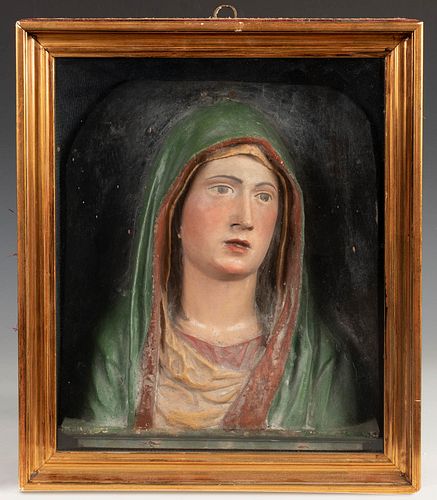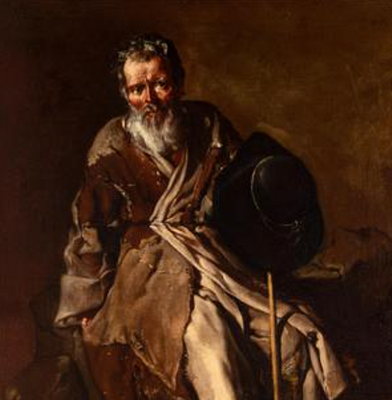Spanish school of the seventeenth century. Workshop of the GARCÍA BROTHERS: MIGUEL FRANCISCO GARCÍA AND JERÓNIMO FRANCISCO GARCÍA (Granada, 16th and 1
Lot 28
About Seller
Setdart Auction House
Carrer Aragó 346
Barcelona
Spain
Setdart Subastas was born in 2004 and is currently the first online art auction in Spain with solidity, prestige and reliability guaranteed by our more than 60,000 users. Setdart has a young, dynamic and enterprising team ready to successfully manage the purchase and sale of art works through custom...Read more
Estimate:
EUR€3,000 - EUR€4,000
$3,225.81 - $4,301.08
Absentee vs Live bid
Two ways to bid:
- Leave a max absentee bid and the platform will bid on your behalf up to your maximum bid during the live auction.
- Bid live during the auction and your bids will be submitted real-time to the auctioneer.
Bid Increments
| Price | Bid Increment |
|---|---|
| EUR€0 | EUR€10 |
| EUR€200 | EUR€25 |
| EUR€500 | EUR€50 |
| EUR€1,000 | EUR€100 |
| EUR€3,000 | EUR€200 |
| EUR€5,000 | EUR€500 |
| EUR€10,000 | EUR€1,000 |
| EUR€20,000 | EUR€2,000 |
| EUR€50,000 | EUR€5,000 |
About Auction
By Setdart Auction House
Jun 1, 2021
Set Reminder
2021-06-01 09:45:00
2021-06-01 09:45:00
America/New_York
Bidsquare
Bidsquare : OLD MASTERS & SCULPTURE - Day 2
https://www.bidsquare.com/auctions/setdart-auction-house/old-masters-sculpture---day-2-6999
Setdart Auction House sofia@setdart.com
Setdart Auction House sofia@setdart.com
- Lot Description
Spanish school of the seventeenth century. Workshop of the GARCÍA BROTHERS: MIGUEL FRANCISCO GARCÍA AND JERÓNIMO FRANCISCO GARCÍA (Granada, 16th and 17th centuries). "Painful Virgin." Polychrome terracotta. Measurements: 44 x 38 x 14 cm. In this devotional image the theme of the Dolorosa is approached, worked with a language attentive to detail, of great pathos. The Dolorosa is a Virgin of Calvary, witnessing the torture and death of her son. This devotion to the sorrows of the Virgin has its roots in medieval times, and was especially spread by the Servite order, founded in 1233. This iconography is characterized by representing Mary alone, with her gaze raised towards the figure of Christ on the cross, her eyes flooded with tears and an expression of deep pain on her face. Over time, the pain that breaks the heart of the Virgin will be represented with one or more swords stuck in her chest, although in the representation that concerns us here, the intention has been to flee from the pathos of the most dramatic baroque, opting instead for the softness of the features and gesture, which does not detract from the strength of the intention to share the Marian pain. The brothers Miguel and Jerónimo Francisco García, canons of the Colegiata del Salvador de Granada, were two sculptors active between the 16th and 17th centuries, who can be placed in the transition phase from naturalism to the first baroque. They worked in clay and wood, and are known for a set of Ecce Homos usually of small size, meticulous modeling and great expressiveness. Recently, a group of terracotta reliefs representing different saints in penitence has been added to their catalog of works: St. John the Baptist, St. Jerome, etc. They have been attributed the crucifix in the sacristy of the Cathedral of Granada, traditionally considered the work of Montañés. Both brothers were responsible for the creation of new iconographic models that helped to consolidate the incipient taste for naturalism in the Granada school. It is true that there were many who inspired him when carrying out his work, but we can say without fear of being wrong, that his works served as a reference to other great artists such as Alonso de Mena. Men of their time, and aware of the peculiarities of working with clay in the right way. They are the founders of the school of barrists of Granada, and it is from their production that clay, that ignoble material, begins to acquire new nuances. Relegated its use in previous times to the realization of domestic furnishings, they would be responsible for raising it to the highest spheres. Following in their footsteps, Alonso Cano, Diego and José de Mora, José Risueño, among many others, would establish this tradition, whose peak would be reached in the 19th century by the baristas of the time: Manuel González, Miguel Marín, Antonio Jiménez Rada and, of course, Francisco Morales González, among many others.
- Shipping Info
-
In-house shipping available. Please inquire at admin@setdart.com.
-
- Buyer's Premium



 EUR
EUR CAD
CAD AUD
AUD GBP
GBP MXN
MXN HKD
HKD CNY
CNY MYR
MYR SEK
SEK SGD
SGD CHF
CHF THB
THB















